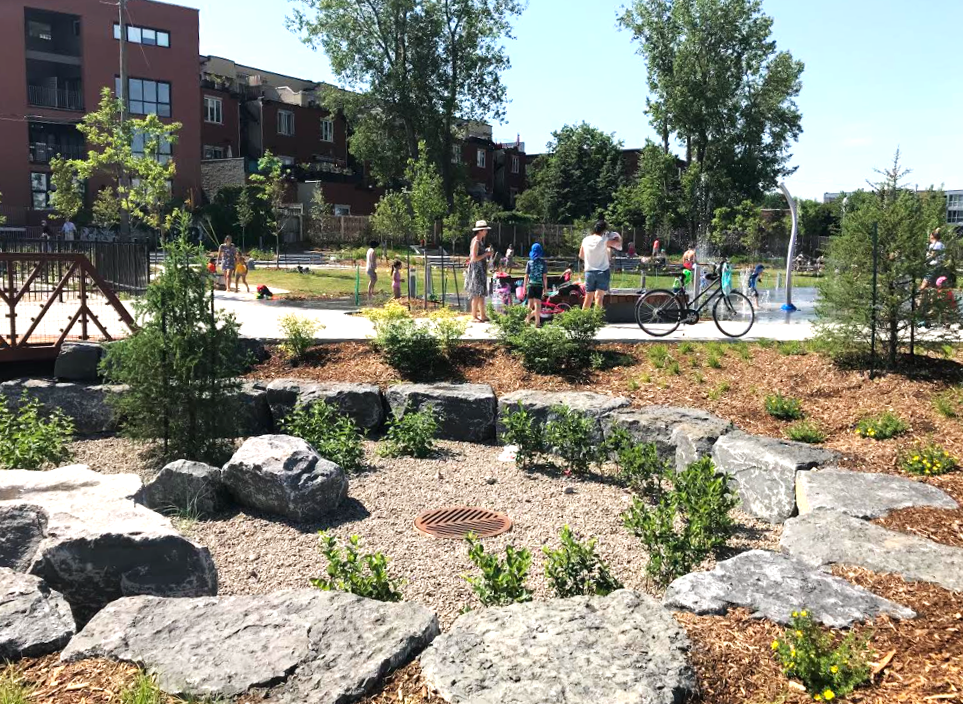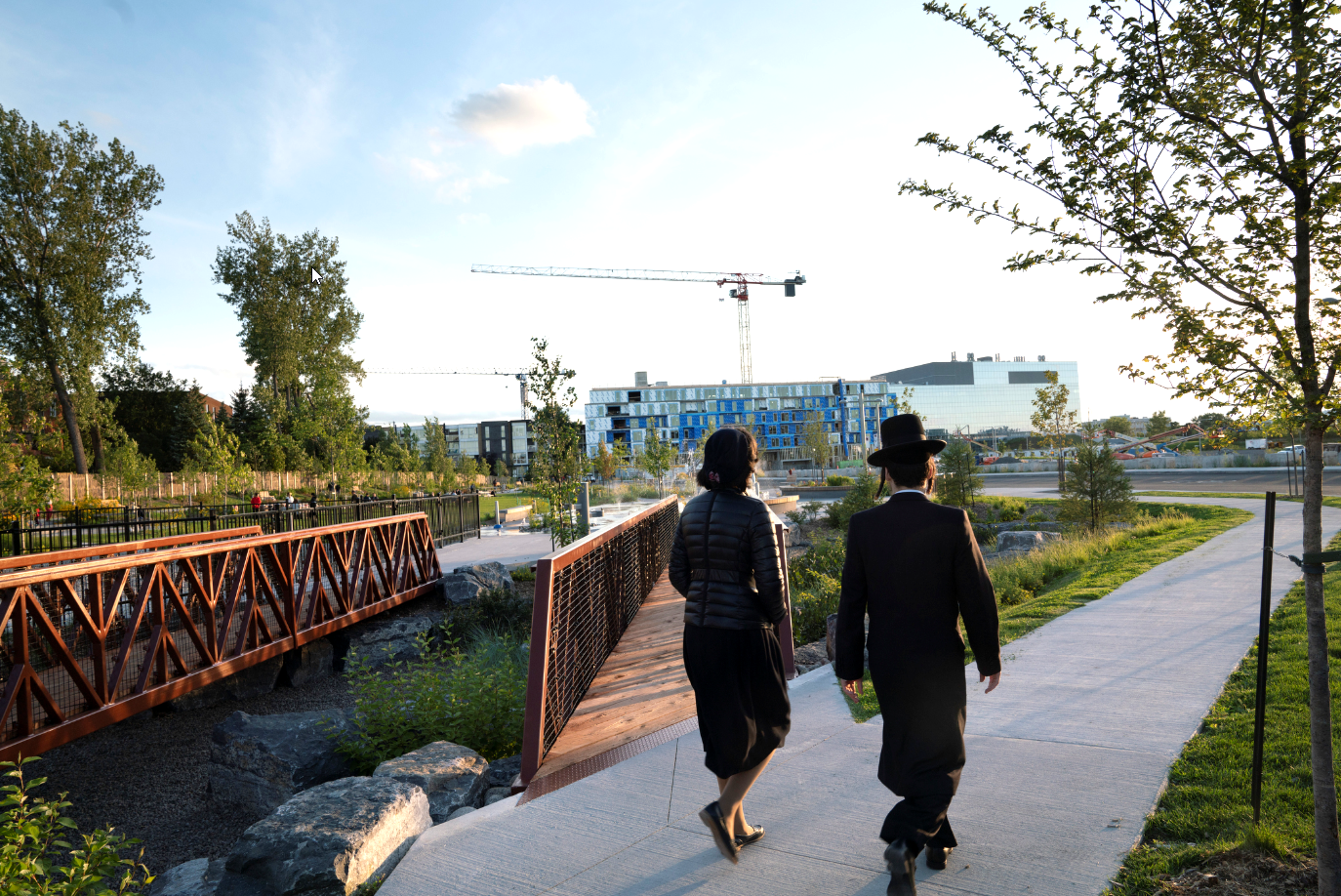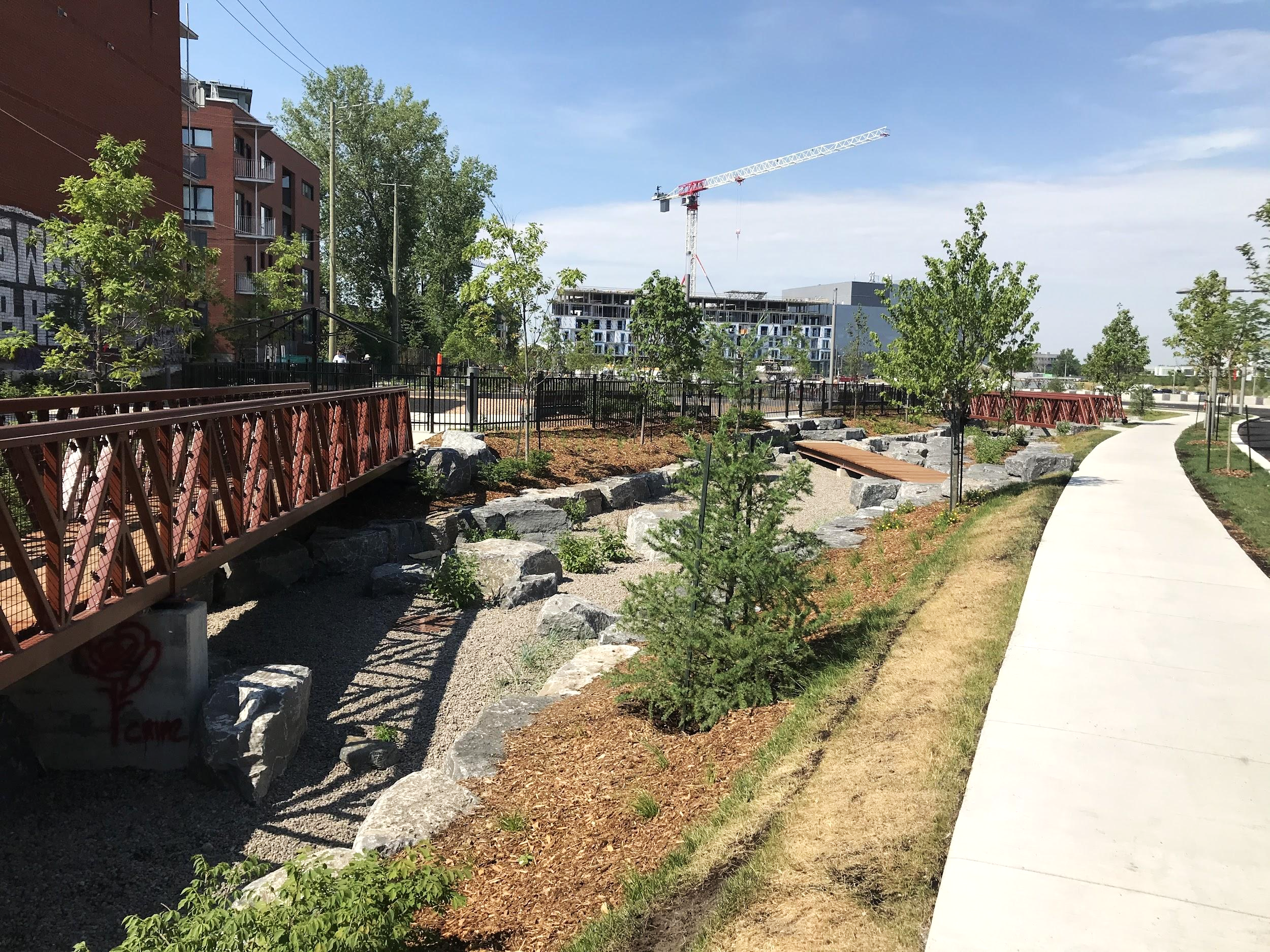 Surface water retention infrastructure of Pierre-Dansereau Park, MIL Montreal project - © City of Montreal
Surface water retention infrastructure of Pierre-Dansereau Park, MIL Montreal project - © City of Montreal Pierre-Dansereau Park, MIL Montreal project - © City of Montreal
Pierre-Dansereau Park, MIL Montreal project - © City of Montreal Pierre-Dansereau Park, MIL Montreal project - © City of Montreal
Pierre-Dansereau Park, MIL Montreal project - © City of Montreal Surface water retention infrastructure of Pierre-Dansereau Park, MIL Montreal project - © City of Montreal
Surface water retention infrastructure of Pierre-Dansereau Park, MIL Montreal project - © City of Montreal
City
Montréal
Main actors
Local Government
Project area
Inner City
Duration
2017 - 2020
A network of sustainable public spaces
The Pierre-Dansereau Park initiative was implemented as part of the MIL Montréal project and is located in the northern part of the City of Montreal’s Outremont borough.
The project included the redevelopment of the former Outremont marshalling yard and provided an opportunity to consolidate the urban and social fabric of the area by creating a network of public spaces that respects the city’s industrial and transport heritage. Amenities include a children’s playground and water play area; a multipurpose area; benches and picnic tables; a pedestrian walkway linking the site from east to west and green infrastructure to retain stormwater.
The new park meets the recreational needs of the community and simultaneously has increased green infrastructure and improved biodiversity
The Ville de Montréal is the second largest city in Canada, with 1.8 million citizens and the largest city in the Province of Québec. In Québec, the ‘Act respecting land use planning and development’ defines the planning and regulatory instruments that can be used to ensure the development of living environments. This law determines not only the obligations and powers of metropolitan, regional and local authorities but also the rules of governance between each different level.
Montréal City Council shares jurisdictions with 19 borough councils. As determined by the City Charter, these boroughs are either fully or partially in charge of urban planning, culture, parks and recreation, community development, human resources and housing, among other issues.
The masterplan for the redevelopment project was adopted by council in 2011 and proposed the development of 4 hectares (40,000m2) including:
- A central piazza, Place Alice-Girard (approximately 0.8 ha);
- A neighbourhood park, Park P-3 (about 1.7 ha), near a community center (ICC);
- Two neighbourhood parks, the Pierre-Dansereau Park (0.7 ha) and the future P-1 Park (0.7 ha).
This proposal was discussed with the Outremont community in 2013.
In 2017, the city adopted a framework document: "the development guidelines for the public domain of the Outremont site" and set the objectives as follows:
- maintain a strong landscape identity from the borough of Outremont to the Mount Royal,
- highlight the site's industrial and railway past,
- prioritise active and public transport modes,
- adopt better sustainable development practices.
- A public participation process was carried out to involve the community in the park’s design. During the consultation, citizens were asked to express their views on two design options. The outcome of this consultation led to a design that took aspects from both options into account. The choices endorsed by the citizens were ambitious and proved to be a challenge in practice, namely the curved steps.
- The project’s technical committee included the city’s technical services, the borough of Outremont and the University of Montréal. The community was closely involved in the design stage of the project and was considered a key player in terms of gaining information, awareness and support.
- The design of the Pierre-Dansereau Park began in 2017 and construction commenced in May 2019.
- The integrated and shared design process brought out innovative design solutions to ensure the dual function of retention and recreation of the park. The need to reconcile these two functions forced the team to take on new challenges in grading, structure, and planting.
- A large open playground incorporating a drainage gutter was laid out below the level of the adjacent streets. To the east of the park, a rain garden combines rain retention functions with an entertainment space for children. These actions offered the opportunity to create a topographical variation in the park while ensuring the ecological retention of rainwater. This type of design makes stormwater management visible while contributing to the improvement of the living environment.
- The park also proposes a greening strategy based on the creation of new wildlife and plant habitats through the planting of abundant and varied vegetation. The maximisation of these planted spaces also contributes to the infiltration of small amounts of rainfall, thus reducing the number of civil drainage infrastructures in the park.
- The park was officially opened in July 2020, although citizens started using the park before the official opening date due to the Covid-19 pandemic.
The lead agency for the project is the City of Montreal who also provided the funds. An additional government grant was received from the Chantier Québec -Canada Fund.
The project's technical committee involved all the city's technical services, the borough of Outremont and the Université de Montréal.
- The citizen participation process allowed us to raise community awareness of new practices for ecological water management.
- The shared design process brought out innovative design solutions to ensure the park had two functions: water management and recreation functions forced the team to take on new challenges in terms of levelling, structure and planting. For instance, a rain garden combines rain retention functions with a play space for children to the east of the park. This allowed the topographical variations to be created to ensure that rainwater can be retained in an ecological way.
- The park follows a greening strategy based on creating biodiversity by planting vegetation. This contributes to the infiltration of small amounts of rainfall, thus reducing the number of civil drainage infrastructures in the park.
The project, which won the award for “Innovative project” from the Québec Urban Planners Organisation (2021).
- The development of a resilient public space with a participative approach required constant compromise between the technical objectives for water retention and the recreational needs of the community. The benefits of the consultation would have had more of an impact if the focus had been on the views and desired ambience of the landscape, rather than the finer details of the design.
- Procurement processes for playgrounds and rigid safety standards have an impact on the quality of the design of the play equipment. Despite the specifications for the play equipment, the resulting play area is below the team’s expectations.
- This new type of infrastructure could create maintenance challenges. Providing information on how to better care for the space is crucial for the park’s long-term conservation.
As with any innovative project, there is a need to convince and reassure the public. Good communication between all parties throughout the project development process was a major factor in building trust.
One of the main successes of the Park is its simple, inexpensive (except for the curved stones) and replicable design, which will encourage Montréal’s Water Department to change its practices and promote the inclusion of innovative stormwater management techniques in future green spaces.
- Interactive map of the Mil Montreal area: https://www.arcgis.com/apps/MapJournal/index.html?appid=8610fe5f46b84a079295f0a4ec292ce7
- Link to the MIL Montreal project: http://ville.montreal.qc.ca/portal/page?_pageid=5798,143406520&_dad=portal&_schema=PORTAL
- Montreal’s strategic plan 2030: https://montreal.ca/en/articles/montreal-2030-first-strategic-plan-8318
- Montreal’s climate plan: https://montreal.ca/en/articles/montreal-climate-plan-objective-carbon-neutral-2050-7613
- Inspiration 1: Hans Tavsen’s Park in Copenhagen https://www.sla.dk/en/projects/hanstavsenspark/
- Inspiration 2: Zomerhofkwartier, Rotterdam: http://www.urbanisten.nl/wp/?portfolio=climate-proof-zomerhofkwartier
- Inspiration 3: Morgan Park, Montréal
On Map
The Map will be displayed after accepting cookie policy